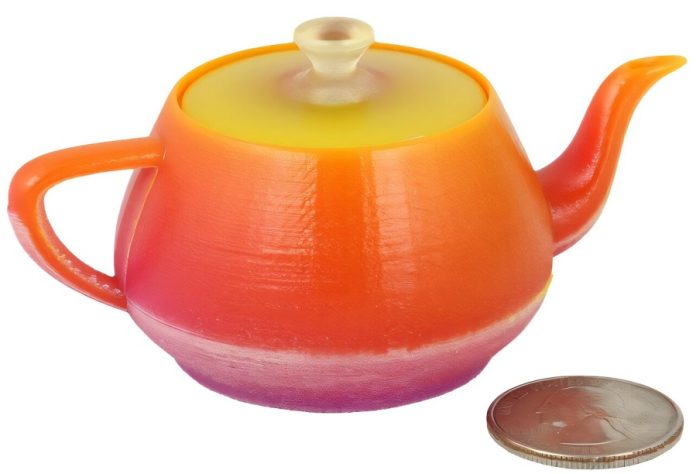
A new open-source software tool is changing the way engineers design and print complex 3D objects.
Developed at the University of Colorado Boulder, the program—called OpenVCAD—lets users easily design 3D-printed objects made from multiple materials, blending engineering precision with the flexibility of coding.
Created by Charles Wade, a Ph.D. student in computer science, OpenVCAD is part of the Matter Assembly Computation Lab led by Assistant Professor Robert MacCurdy in the Paul M. Rady Department of Mechanical Engineering.
Their recent paper, published in Additive Manufacturing, describes how the tool helps engineers create intricate, multi-material designs more efficiently than ever before.
“Before OpenVCAD, engineers often had to write custom code for every single project,” said MacCurdy.
“That made the design process slow and repetitive. OpenVCAD solves this by providing a shared, ready-to-use framework for complex designs.”
Traditional 3D design software, or CAD programs, mainly focus on an object’s outer surface.
They assume that the material inside is uniform. But in the real world, many objects—like shoes, prosthetics, or soft robots—need smooth transitions between hard and soft materials or areas with different flexibility or strength.
This type of design, called gradient design, has been notoriously difficult to achieve using existing tools.
OpenVCAD changes that. Instead of manually redrawing or reprogramming each version of a design, users can adjust functions in the code to instantly modify material distributions within an object. For example, an engineer could design a shoe sole that gradually shifts from firm rubber at the bottom to soft foam near the top—all in one digital model.
“This is the first widely available, code-based tool for multi-material 3D design,” said Wade. “It’s powerful, flexible, and easy to use. You can change a single parameter and instantly see how the entire design updates, something that traditional CAD systems can’t do.”
The research team tested OpenVCAD with several types of 3D printers, including one in MacCurdy’s lab capable of printing objects with up to five materials at once. The software’s versatility means it can be applied in nearly any field—from healthcare to robotics to aerospace.
Surgeons, for instance, can use OpenVCAD to design lifelike medical models for surgical training. Robotics engineers can build soft machines with controlled flexibility, and mechanical designers can create structures that absorb impact more efficiently by fine-tuning material gradients.
Because OpenVCAD is open-source, anyone can download and use it freely. It’s implemented in Python, so users can start designing with just one line of code. “We’ve already seen researchers from other institutions adopting it,” Wade said. “Our goal is to empower the engineering community to create more advanced designs without the usual software limitations.”
MacCurdy added, “This approach to multi-material design has the potential to transform how people think about 3D printing. We’re just scratching the surface of what’s possible.”
With OpenVCAD, the future of 3D printing looks not just layered—but blended, efficient, and open to everyone.



